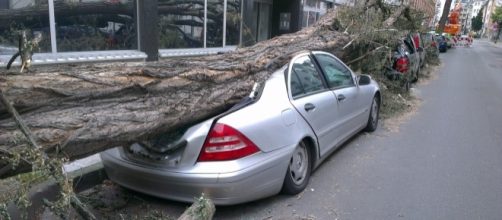On this day in 1974, 148 deadly tornadoes wreaked devastation in over a dozen states, which experts later would call an "ominous sign" of Global Cooling. Tony Heller, the editor at Real Climate Science, explains how on April 3, 1974, temperatures across much of the south soared past 90 degrees, with the rest above 80 degrees and Texas going over the 100-degree mark.
Then, a massive cold front came crashing down from Canada and collided with the warm, moist air barreling northwards from the Gulf of Mexico. Both were set to collide beneath a powerful jet stream whipping eastward at 40,000 feet with 140-mile-per-hour winds.
The combination of three powerful weather events led to the largest outbreak of tornadoes since recordkeeping began. The tornadoes devastated 13 states and killed over 300 people with another 6,000 injured. Thousands of homes were flattened or destroyed. What happened on that day was what meteorologists call a "super outbreak."
How 148 #Tornadoes In One Day in 1974 Changed Emergency Preparedness | Smart News | Smithsonian https://t.co/qlsfniMhtZ
— John A (@springwater2002) April 3, 2017
Apex of ice age scare
It also happened when the nation was in the grips of the 1970's ice age scare, similar to the current global warming scare, and fossil fuel combustion was to blame for emitting particulates that blocked out the sun.
One prominent magazine, Newsweek, wrote in 1975 that the Earth's weather changes were all ominous signs of global cooling.
Newsweek wrote the "evidence in support of these predictions have accumulated so massively" that meteorologists were "hard-pressed" to keep up with it. They pointed to "shorter growing seasons", droughts, and floods as leading to widespread calamity. They even used the 1974 “super outbreak” as additional proof that a cooling Earth was causing extensive destruction.
Newsweek said that scientists found these disparate events as signs of "fundamental changes to the world's weather." The magazine pointed out authoritatively that after three-quarters of a century of extraordinarily mild conditions, "the Earth's climate seems to be cooling." And meteorologists were nearly unanimous this trend would continue and produce a whole host of issues including famine, drought, excessive rain, and economic ruin.
Newsweek 1975 https://t.co/P3HoZAqz76 pic.twitter.com/oXdmQpaCY5
— Newsman (@NewsAndShite) March 30, 2017
NOAA warns of cooling
NOAA told Newsweek there had been a 0.5-degree drop in temperatures since 1945 in the Northern Hemisphere. Even satellite photos of the Northern Hemisphere showed sudden and large increases in snow cover from 1971 to 1972. This drop in temperatures also came after the pronounced warming of the 1930s, which still holds the title as hottest decade on record. NOAA warned that continued cooling could upset the Earth’s “food-producing system”, leading to famine, droughts, and starvation.
Of course, none of this happened and NASA noted last year the planet was actually getting greener from increased carbon dioxide levels.
Food yields have never been higher. In 1975, climatologists were pessimistic government leaders would take any action to fight climate cooling. Today, they are worried government leaders will slash the billions being doled out in research and grants to fight climate change.

